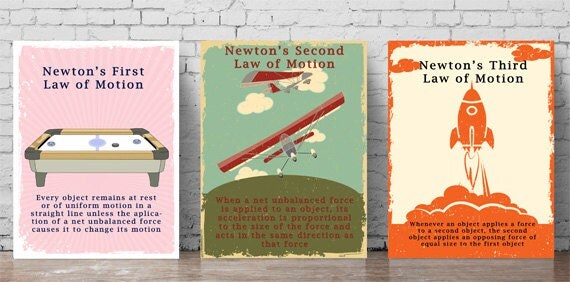

Newton filled this gap by formulating the universal law of gravity. In this sense Newton's second law is incomplete. However, Newton's second law does not describe any specific force in terms of the properties of the particle and of its environment. The acceleration of the moon is “explained” in a similar way. Thus a falling apple accelerates as a result of the force exerted on it by the earth. In other words, the same laws of motion-Newton's laws of motion-govern both celestial and terrestrial motion.Īccording to Newton's second law, the net force acting on a particle “causes” it to accelerate. Newton recognized that the laws of motion must also be universal in character. Newton's realization that gravity is universal had important implications. The apple is then in orbit! Newton recognized that the same force that acts on the apple-gravity-also acts on the moon. For example, as the horizontal velocity of a falling apple increases, it reaches a point where, because of the curvature of the earth, the earth recedes from the apple at the same rate that the apple falls toward the earth. Newton saw the orbiting moon as the limiting case of a falling object possessing a large horizontal velocity. In Newton's hands, however, universal gravitation and a universal set of dynamic laws evolved together.

The motion of falling apples, for example, was never connected to the motion of an orbiting planet. Prior to Newton, scientists believed that physics on the earth differed from physics in the heavens. This, too, remained for Newton to discover. However, Kepler failed in his attempt to find this long-range guiding force. Kepler had studied the planets and discovered three laws describing their motion. The unknown force guiding planets in their orbits acted over great distances. However, the explanation of these gravitational effects remained for Newton to discover.Īn apparently unrelated problem of 17th-century science involved celestial motion. Galileo had already formulated the laws of kinematics, which described the motion of objects influenced by gravity. Gravity was thought to be a local force, and only those objects near the earth were believed to be affected by it. In Newton's day the word gravity referred to the force exerted on objects by the earth. Joseph Priest, in International Edition University Physics, 1984 6.6 The Universal Force of Gravitation


 0 kommentar(er)
0 kommentar(er)
